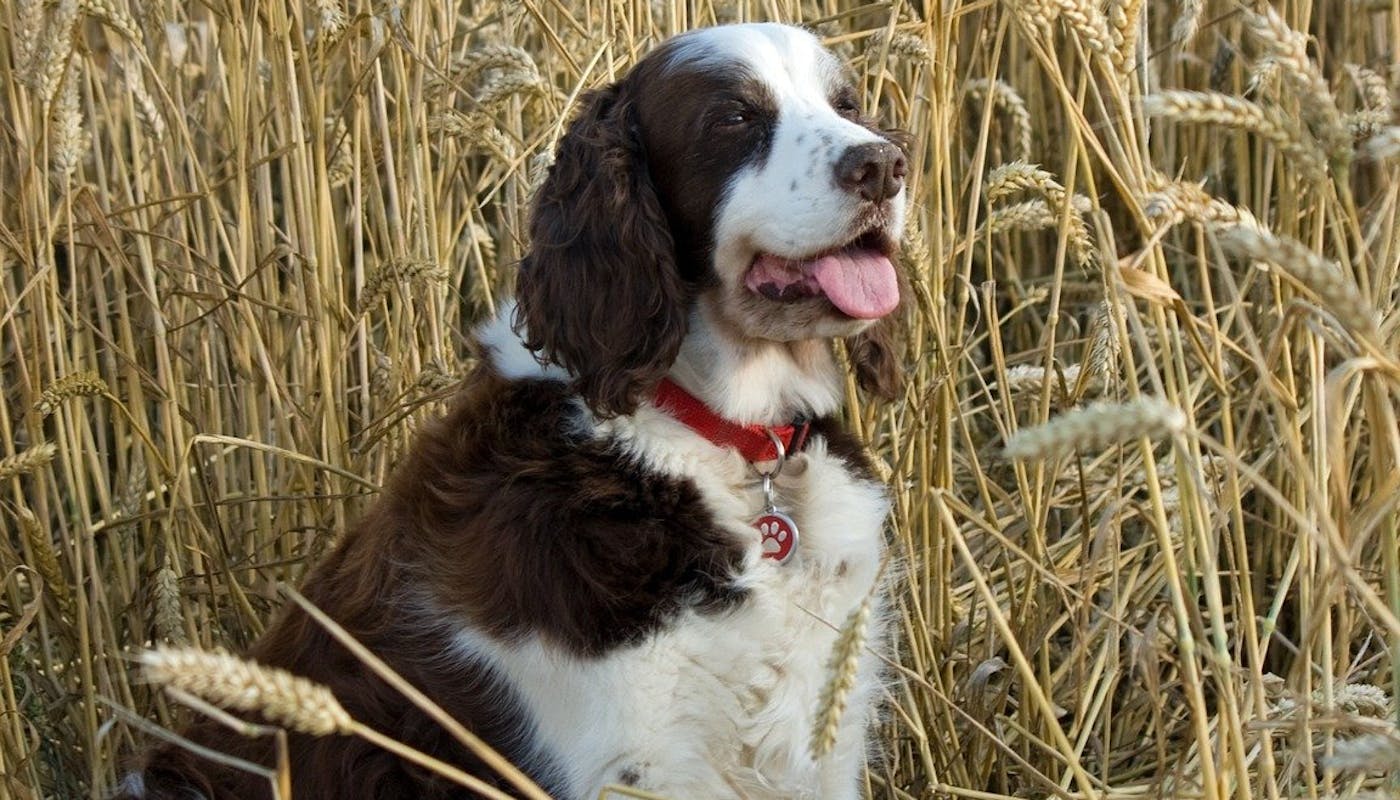Can You Give Claritin To Dogs With Allergies?
If your dog has been diagnosed with an allergy, you might be wondering whether your regular antihistamine will help them. Claritin is widely available and a quick online search will tell you how much can safely be given to your dog. But always check with your vet first – because in some circumstances, Claritin won’t be suitable for your four-legged friend.
What Is Claritin?
Claritin is a human antihistamine. Its active ingredient is loratadine, which blocks histamines from attaching themselves to cell receptors. Although the FDA has not yet approved a veterinary version of Claritin, this human drug is often prescribed by vets.
How Can Claritin Help My Dog?
In dogs, Claritin is suitable for treating skin allergies, inflammations and inflammatory reactions (to other allergens or bites). It’s also used to treat mast cell tumours, which cause similar symptoms to an allergy.
Claritin can prevent or reduce symptoms like:
- Itchy skin
- Sore eyes
- Runny nose
- Hives
- Facial swelling
DON’T Give These Forms of Claritin To Your Dog…
Hold up. Before you hit the pharmacy or medicine cabinet, just watch out for Claritin-D: it’s different as it contains a decongestant to prevent blocked sinuses (pseudoephedrine). This extra ingredient is toxic, and can be fatal, for dogs, so you should never give any dosage of Claritin-D to your dog. You should also avoid the liquid form of Claritin: it typically contains alcohol, which makes it unsuitable for dogs.
Can I give Claritin To My Dog?
It’s still not a straight ‘yes’ – there are a few more exceptions. You should NOT give Claritin to dogs who:
- Are pregnant or breastfeeding
- Are already taking antifungal or antibiotic drugs
- Have epilepsy
- Have (or are at risk of) liver or kidney disease.
All the same, we recommend checking with your veterinarian before giving human medication of any kind to your dog.
How Much Claritin Can I Give My Dog?
The dosage will be between 5 and 10mg, calculated according to your dog’s weight. Again, best to check with your vet rather than the internet.
Claritin can cause side effects including vomiting and diarrhoea. Some dogs might seem drowsy, but that’s actually unlikely with Claritin because it doesn’t enter the brain. If your dog has just swallowed more Claritin than intended, the effects could range from drowsiness and vomiting to seizures and fever (and you’d better phone the vet... again).
GIVING CLARITIN TO DOGS WITH ALLERGIES: FAQS
Is Claritin Better Than Benadryl?
Although they’re both antihistamines, Claritin and Benadryl contain different active ingredients. Benadryl contains diphenhydramine, which is more likely to make you or your dog drowsy (and that’s why it’s sometimes recommended for insomnia as well).
Both medications cause different side effects, including interference with different drugs – Claritin isn’t recommended alongside antibiotics, for example, and Benadryl can affect drugs prescribed for depression or anxiety. For this reason, and we know we keep saying this, but it is always worth consulting with your vet – they can access your dog’s medical history to see if there are any red flags about either of these antihistamines.
Does My Dog Have Hay-fever?
Did you know that dogs can get hay-fever too? But a pollen allergy is not as common in dogs as it is in humans.
If your dog has an allergy to grass or pollen, they might start to develop itchy patches on their skin, including groin and paws. Just like humans, dogs can be allergic to different types of pollen; you’ll need an allergy test to find out which one is affecting them.
Tip: If you think your dog has hay-fever, look online to find out the local season for each type of pollen. You will also be able to find “pollen forecasts” which warn us when pollen rates are rising. These resources will help you to look after your dog; for instance, you might want to walk them early in the morning rather than evening when pollen counts have been high. Like food intolerances, hay-fever can be modified by avoiding the source of irritants.
Is Claritin Suitable For Different Dog Allergies?
Dog allergies can be grouped into food, environmental, and skin allergies. But they can all manifest themselves through skin inflammation and dryness. Claritin is particularly recommended for dogs with skin allergies but will help with skin inflammations caused by different factors. It can even help to decrease the response to insect bites.
How Fast Does Claritin Work For Dogs?
Claritin and other antihistamines are pretty fast-acting. You should see an improvement within one or two hours, and side effects will appear quickly too. After administering Claritin to your dog for the first time it’s a good idea to hang around and monitor them.
What Are The Side Effects Of Claritin In Dogs?
Because loratadine does not enter the brain, it is not thought to cause drowsiness. But Claritin still causes some dogs to appear lethargic, along with other side effects including:
- Vomiting
- Diarrhea
- Dehydration
- Dry eyes
- Lethargy or drowsiness
Be alert and watch your dog carefully for symptoms that they can’t tell you about. Blurry vision or dry eyes might not be obvious to you but can cause stress for your dog – probably more than the allergy did. Claritin can cause urinary retention and dry mouth, which is why it is not a good solution for dogs with liver conditions.
How Much Claritin Should I Give My Dog?
The advice ranges from 0.1-0.5mg per pound of body weight, so small dogs will be given around 5mg of Loratadine daily, and medium-sized dogs can take around 10mg. Please don’t pick a dosage without a quick chat with your vet! Why? Small dogs or older dogs can be at higher risk of side effects and your vet knows your dog’s medical history, so they’ll be able to recommend the safest dosage.
